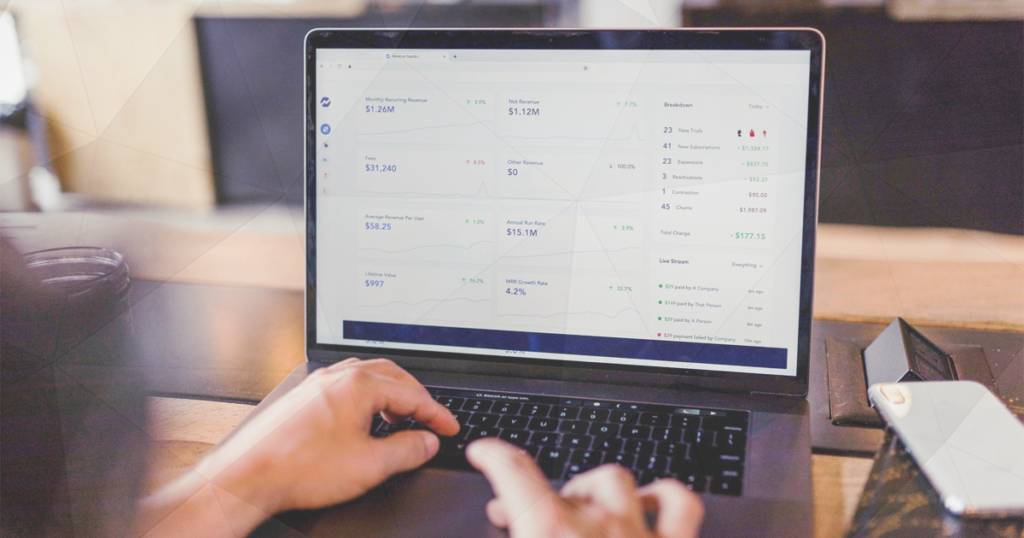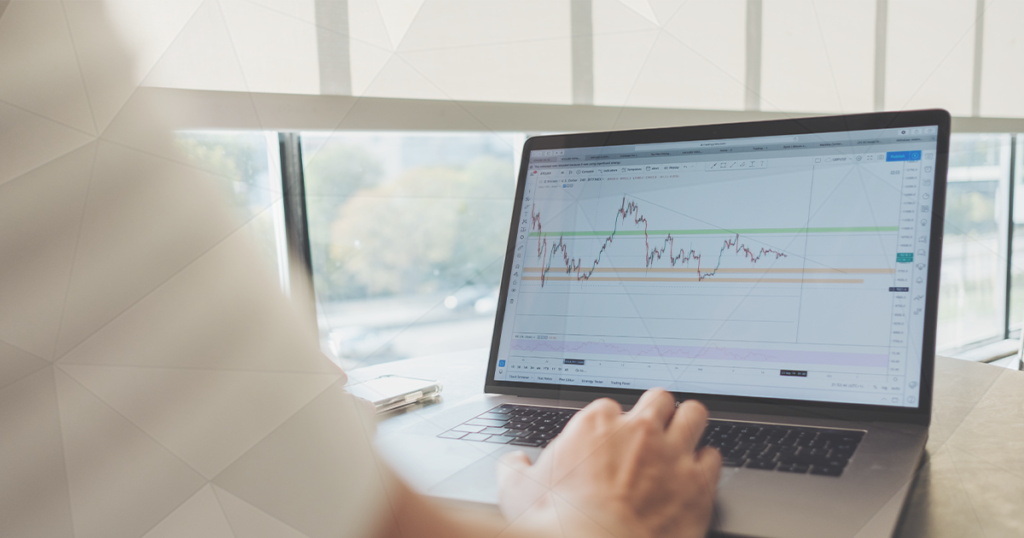Day Trading vs. Swing Trading

Both trading styles have their unique characteristics and appeal to different types of traders.
Let’s dig deeper into their main differences and show which trading style is the best for your trading approach.
Day Trading Explained
Day trading is a popular trading style that involves opening and closing trades during the same trading day. Day traders don’t hold their trades open overnight, which eliminates overnight risk but also limits the profit potential of promising trade setups.
In the range of trading styles, day trading is slightly longer-term than scalping but shorter-term than swing trading and position trading. Just like with scalping, day traders should be actively monitoring their open trades in order to be able to act when market conditions change. This means that you have to be prepared to sit in front of your trading platform for at least a few hours per day.
Since day traders open more trades and utilise slightly more leverage than swing traders, trading costs can have a significant impact on the performance of a day trader. That’s why choosing a regulated broker with tight spreads and low commissions is the first thing you need to complete before you start with day trading.
Day traders are dependent on short-term volatility and have to arrange their trades around the most liquid market-hours of a trading day.
Swing Trading Explained
Unlike day traders, swing traders hold their trades for days or even weeks and try to take advantage of prolonged market “swings” in one direction. Swing trades usually have a higher profit target than day trades, but stop-losses have also to be wider to account for the higher market volatility on longer-term timeframes.
Since swing traders hold their trades overnight and sometimes over the weekend, they are exposed to overnight market risk and unexpected news that could negatively impact their positions. You can protect against those negative price movements by always using stop-losses in all of your trades.
Trading costs are slightly lower in swing trading compared to day trading because of the smaller number of trades. Since swing traders let those trades perform for days or weeks and aim for a higher profit target, profits are usually higher than with day trading.
Read: A Lowdown on Swing Trading Salaries
Day Trading vs Swing Trading: Main Differences
Now that we’ve covered the main characteristics of day trading and swing trading, let’s compare them…
Best Trading Times
Day traders live on volatility. If there are no price movements during a day, day traders will have to close their open positions at breakeven or with a slight loss by the end of the day. That’s why day traders choose the most active and most liquid market hours, which is the opening of the New York Stock Exchange for stocks and the New York-London overlap for currencies.
The New York-London overlap starts with the opening of the New York session at 13:00 UTC and ends with the close of the London session at 17:00 UTC. Those four hours are the most liquid in the Forex market and provide the largest trading volume during the day. In addition, most important US market reports are released at the open of the New York session, which creates additional volatility in the market and profitable trading opportunities.
Swing traders don’t have to pay that much attention to the time of day they place their trades. Since their holding period is much longer, intraday volatility doesn’t impact their performance to a large extent. Still, swing traders should try to avoid opening trades during very illiquid market hours, since spreads and trading costs can significantly widen during those times.
Read: 5 Advantages of Trading for Yourself
Timeframes
Besides the best trading times, day trading and swing trading also differ in the timeframes used by traders. Day traders base their trading decisions on shorter-term timeframes, such as the 5-minute, 30-minute, and 1-hour ones. While those timeframes offer more trading opportunities than longer ones, they also include more market noise that can distort technical levels and eventually lead to more trading losses and a lower success rate of trades.
To improve their success rate, day traders sometimes use an analysis called multiple timeframe analysis. MTFA involves opening more timeframes simultaneously (on different screens) and scanning for trading opportunities that are in-line over different periods of time.
In the second step, the trader would switch to the 30-minute chart to spot pullbacks in the opposite direction of the underlying trend identified in the first step. Fibonacci levels are a popular tool used in this step.
Finally, in the third step, the trader would switch to the 5-minute chart to fine-tune his entry and exit points, stop-loss and take-profit levels.
Swing traders, on the other hand, use longer-term timeframes to spot “swings” in the market. Typical timeframes include the 4-hour, daily, and weekly ones. While those timeframes offer fewer trading opportunities than shorter-term timeframes, they also come with less market noise and a higher success rate.
Trading Costs
The other part where day trading and swing trading show their personalities is trading costs. Day trading is a faster trading style than swing trading, and since prices move to a lower extent over the short-term, day traders have to use higher leverage to increase their profit potential. All this combined leads to higher trading costs when compared to swing trading.
Depending on the trading strategy used, a day trader could benefit from a broker that offers tighter spreads and lower trading commissions. Day traders who want to day trade the market should also look into brokers which offer guaranteed stops, which means that a trade will be closed at exactly the pre-specified price level.
Swing trading usually comes with lower trading costs than day trading, because swing traders base their trading decisions on longer-term timeframes. Those trades also have a higher profit target as markets exhibit larger movements over the longer term, but the number of tradable opportunities is relatively lower.
Revealed: 12 Struggles New Traders Face (And How to Overcome Them)
Trading Strategies
If you want to be a day trader, chances are that your trading strategy can be grouped into one of the following three categories:
- Breakout trading
- Trend-following
- Counter-trend trading
Breakout trading involves taking trades in the direction of an important technical breakout. Since pending orders tend to cluster around important levels, breakouts are usually followed by strong momentum and increased volatility that day traders want to take advantage of.
Popular technical tools used by breakout traders include chart patterns, such as head and shoulders patterns, double and triple tops and bottoms, triangles, rectangles, wedges, and flags. Channels, trendlines, and support and resistance levels are also popular choices of breakout traders.
Trend-following, as its name suggests, refers to taking trades in the direction of the underlying market trend. The MTFA analysis described earlier is a popular and efficient way to trade in the direction of the trend and buy or sell at the most favourable price – at pullbacks.
Finally, counter-trend trading means taking trades in the opposite direction of the trend. Those movements are price corrections that usually return a lower profit potential. This strategy should only be used by experienced day traders.
Swing traders can also use the same trading strategies to day traders. They can trade breakouts, trade in the direction of the underlying trend, or in the opposite direction of the trend. However, since fundamentals have a more important role over longer periods of time, swing traders should be able to combine fundamental analysis with technical analysis in order to increase their success rate.
If you want to trade with a swing trading style, learn as much as possible about fundamentals and their impact on the markets. In the stock market, measures such as EPS or P/E ratios are popular choices by swing traders, while the Forex market has other important market reports such as the GDP, inflation, labour market statistics, retail sales, and interest rates, to name a few.
You May Like: 15 Eye Opening Day Trading Statistics
Trading Risk
Day traders open and close their trades during the same trading day, which means that overnight risk is completely eliminated. During the night, unexpected news can significantly impact open positions and lead to large price movements, especially is the news is material.
While some of you might think that this is an advantage of day trading, holding trades for a few hours can also impact the trading performance in a negative way. If the market reveals a promising trade setup, day traders won’t be able to take advantage of prolonged market swings if they close their trade by the end of the trading day.
Swing traders hold their trades for days or weeks, which means that they’re exposed to significant overnight risk. Holding trades over the weekend is also not for the faint of heart. Many important market events occurred during the weekend, such as the capture of Saddam Hussein, which led to large gaps once the market opened on Monday.
To avoid getting stopped out by gaps or usual market volatility, swing traders use wider stop-losses than day traders, which on the other hand also requires a larger trading account to make the same profits as a day trader.
Read: Is Day Trading Gambling?
Leverage
Most markets don’t move much on a daily basis. If there are no important market reports, stocks can move for a few dollars while currencies usually fluctuate in a tight band of 1%. To increase profits, day traders have to rely on leverage. Leverage allows traders with smaller trading accounts to open much larger trades than without leverage, which magnifies not only profits but also losses.
Swing traders don’t have to rely much on leverage as their trades have wider stop-losses and take-profit levels. Wider stop-losses require smaller position sizes to keep risks and losses under control.
Minimum Capital
Another important difference between day trading and swing trading is the required minimum capital to start trading. While most retail brokers don’t have a minimum deposit requirement, this doesn’t mean that you should start swing trading with the same amount of capital as with day trading.
Markets exhibit more volatility over the longer-term, which requires swing traders to have enough trading capital to withstand periods of negative price movements. When a position falls below zero, a swing trader needs to make sure to have enough free margin to avoid a margin call when trading on leverage.
While day traders who actively manage their trades can close losing positions as soon as possible, some brokers (based in the United States) require a trading account of at least $25.000 to allow day trading. According to the FINRA, a pattern day trader is a trader who opens at least four “day trades” within five trading days. The rule describes a day trade as a trade that is opened and closed within the same trading day.
Risk Management
Some risk management tools also differ between day trading and swing trading. Day traders have to actively manage their trades during the day, closing them as soon as market conditions change to avoid larger losses. Swing traders usually keep their trades running until either their stop-loss or take-profit gets triggered.
Since day trades have a tighter stop-loss than swing trades, position sizes can be slightly higher. Whether you want to be a successful day trader or swing trader, you have to define strict risk management rules and use stop-loss levels in all of your trades.
Final Words
Both day trading and swing trading have their unique set of advantages and disadvantages. It’s hard to tell which one is better, as both styles appeal to different types of traders.
Do you want a more exciting trading experience with more trades, actively managing them during the day?
Then day trading could be the better choice for you.
If you want a more relaxed trading where trades are held for days or weeks, paying attention to market fundamentals, then you’ll likely be better off swing trading the markets.





